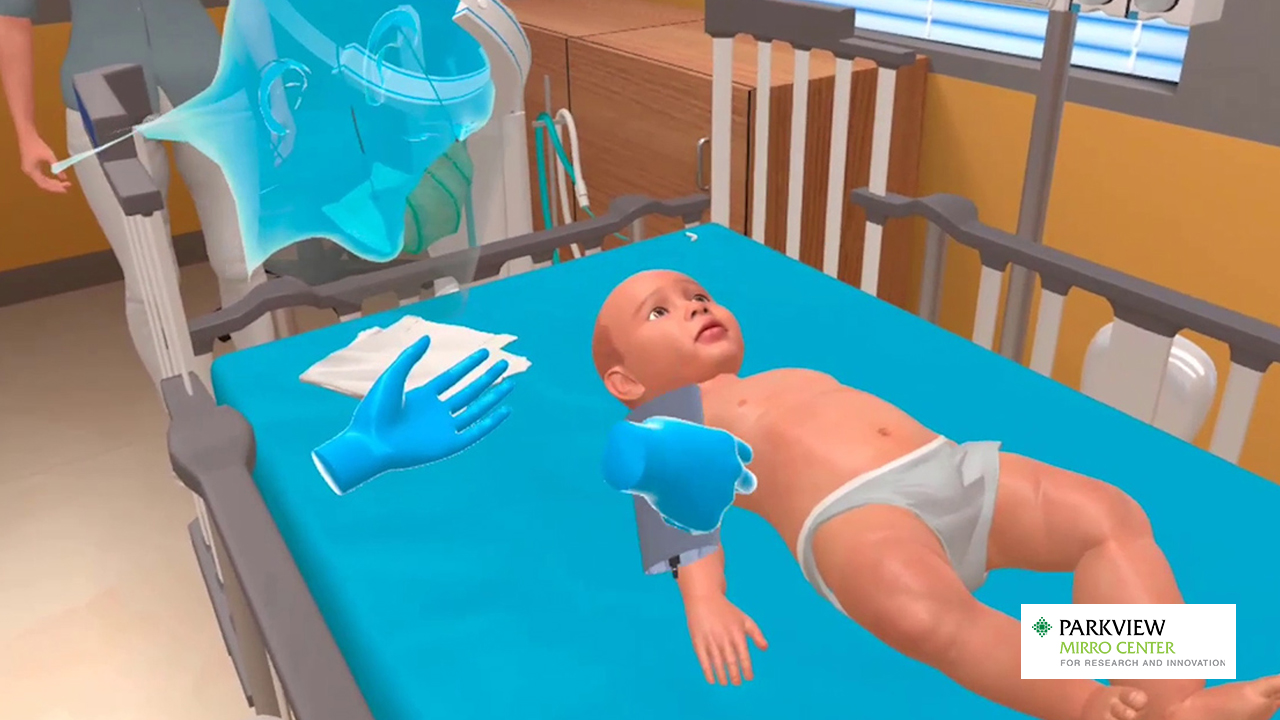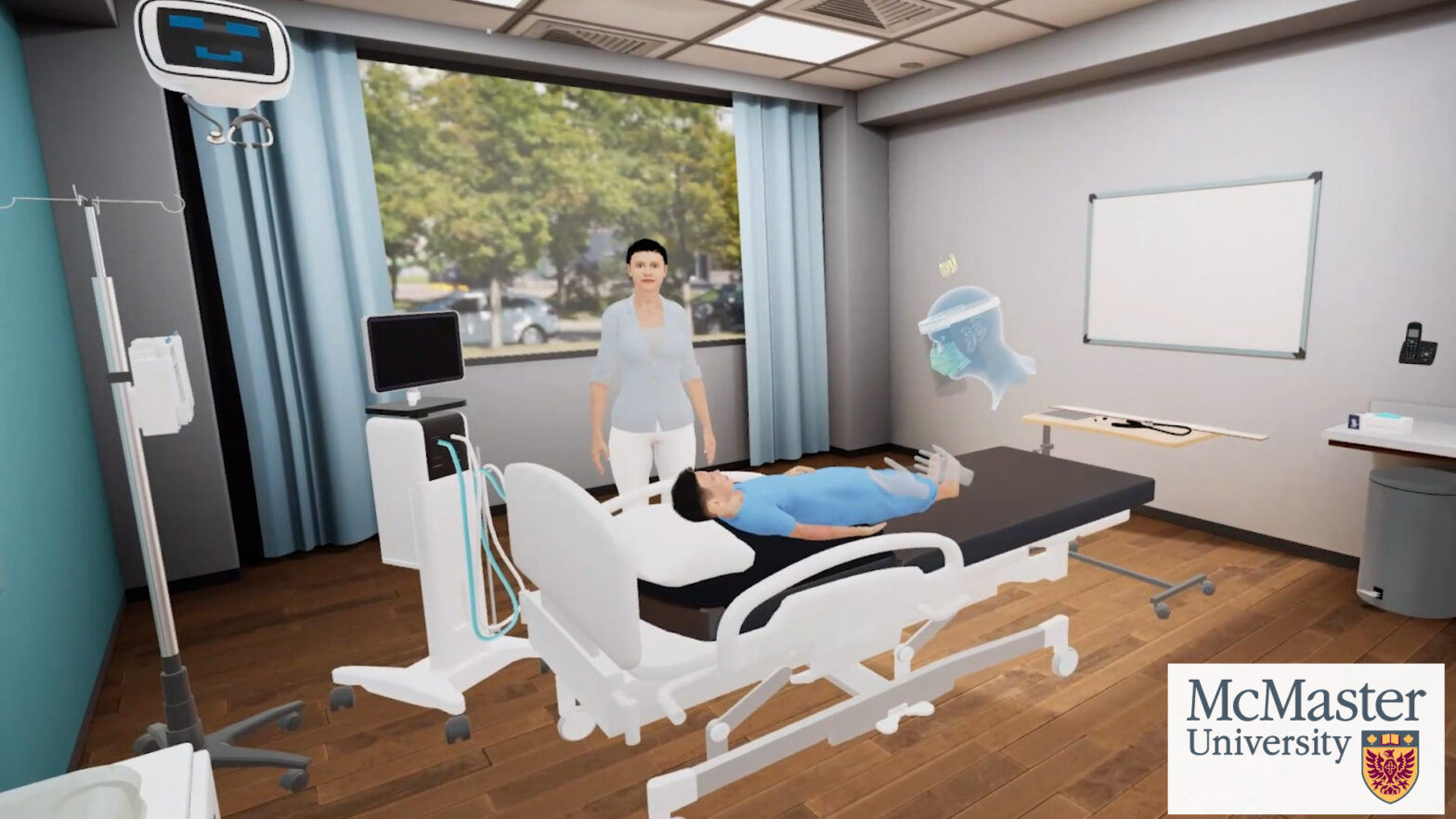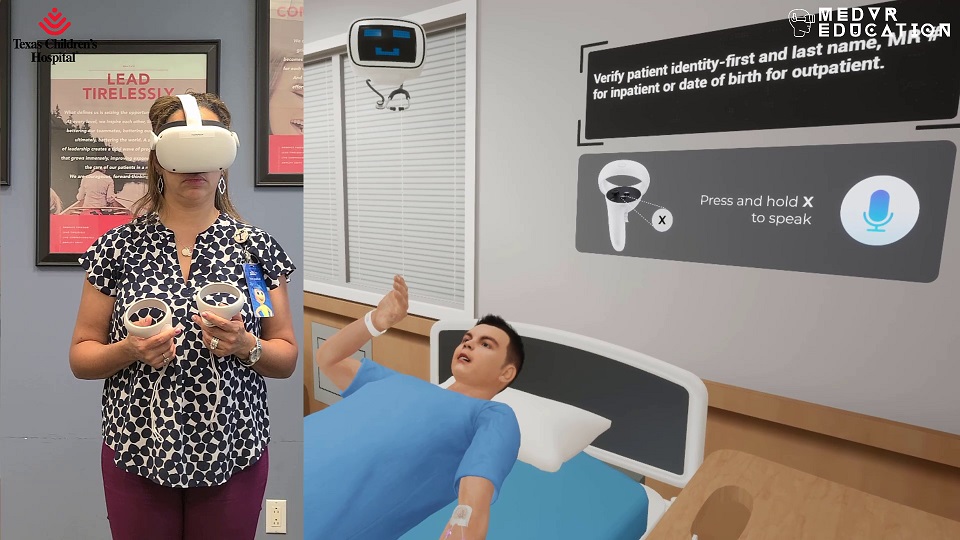
With the aim of eliminating instances of CLABSI infections, MedVR Education and Texas Children’s Hospital came together to develop a VR training program that provides clinical staff practice in identifying and preventing cases of CLABSI.
CLABSI, or central line associated blood stream infection, is preventable yet thousands of deaths occur every year. In the United States alone, within a span of five years, there were an estimated 30,100 infections every year in intensive care units and wards. According to another report, CLABSI also accounts for 25000 preventable deaths per year. CLABSI is a serious infection that leads to prolonged hospital stay and a huge drain on healthcare expenses, for both patients and healthcare units. It also carries with it the risk of mortality.
What is CLABSI?
As the name suggests, CLABSI is an infection in the central line. A central line is a catheter that is placed in a patient’s large vein leading up to the heart either to draw blood or provide fluids and medication to critically ill patients. As per the requirement, the line can be left in place for several weeks or months. As long as the line is in place, it requires proper care and handling.
When germs (bacteria and viruses) enter the bloodstream through the central line it results in a case of CLABSI. This is a serious condition and can even turn fatal. This makes it imperative to stringently follow guidelines related to insertion, maintenance, and removal techniques.
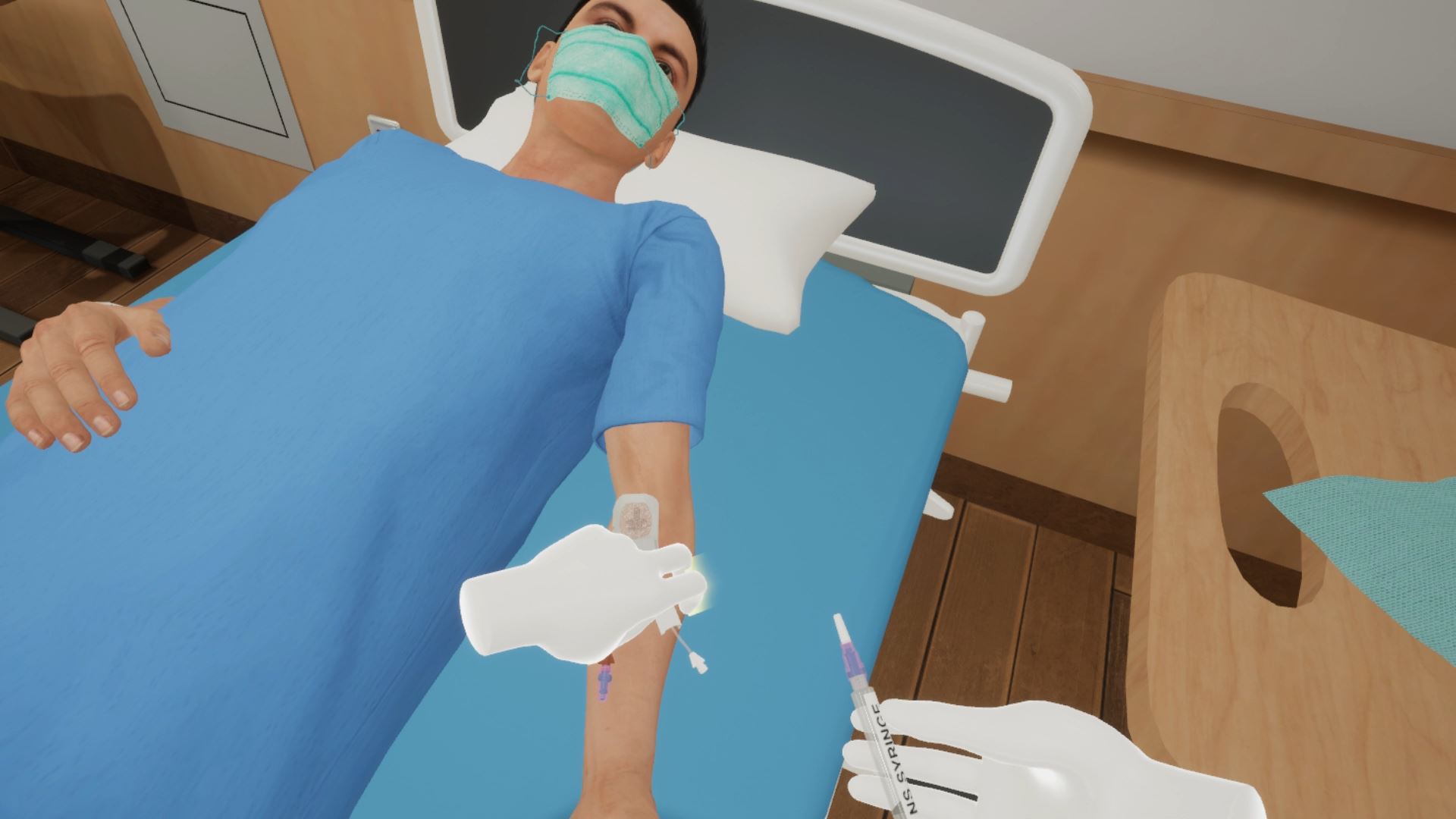
CLABSI Prevention VR Training Program: A Game Changer
MedVR Education’s commitment to leveraging innovative technology for healthcare education has brought about a paradigm shift in CLABSI prevention. By harnessing the power of virtual reality, the company, in partnership with Texas Children’s Hospital, has created a training program that has proven to be highly effective in reducing CLABSI cases.
Angie Rangel, DNP, RN, NPD-BC, CCRN-K, LNC, Assistant Director at Texas Children’s Hospital, expressed her admiration for the VR training program, stating, “this CLABSI Prevention VR training simulation has enabled our clinical staff to engage with the training in a way that traditional methods could never achieve.”
– Impressive Results and Enhanced Engagement: The implementation of the VR training program has yielded impressive results with the immersive way of learning, bringing about “… greater engagement in the training sessions. Learners find it easier to understand, perform and practice procedures and their confidence has grown exponentially,” according to Tanya Nelson Hall, MSN, RN, RNC-NIC, Nursing Education Specialist with Texas Children’s. Furthermore, there is a remarkable reduction in training time, with learners completing sessions successfully in almost half the time as compared to traditional methods.
– Improved Patient Care: Natalie Richards, MSN, RN, NPD-BC, CPN, Nursing Professional Development Specialist, Texas Children’s, emphasized the program’s impact on patient outcomes. She stated, “Patient care is at the core of our mission, and this VR training program has elevated our clinical staff’s ability to provide safe and high-quality care. The immersive experience fosters critical thinking and enhances clinical judgment, which directly translates to improved patient outcomes.”
– Clarity of Concepts: MedVR Education sessions are set in photorealistic VR environments where learners practice procedures with virtual patients. These virtual patients exhibit changes in vitals as per actions performed by learners. A correct step displays an improvement in patient condition while a misstep will lead to worsening conditions. With such instant feedback, learners better relate to the training and get a clarity of concepts which was difficult to obtain in the traditional training methods. This means that learners are far more ‘patient ready’ with this innovative means of training, as stated by Tanya Nelson.
Key Takeaways
– MedVR Education’s VR training program has led to a significant reduction in error rates.
– Clinical staff report increased engagement and confidence after participating in the VR training.
– The program has received acclaim from key stakeholders.
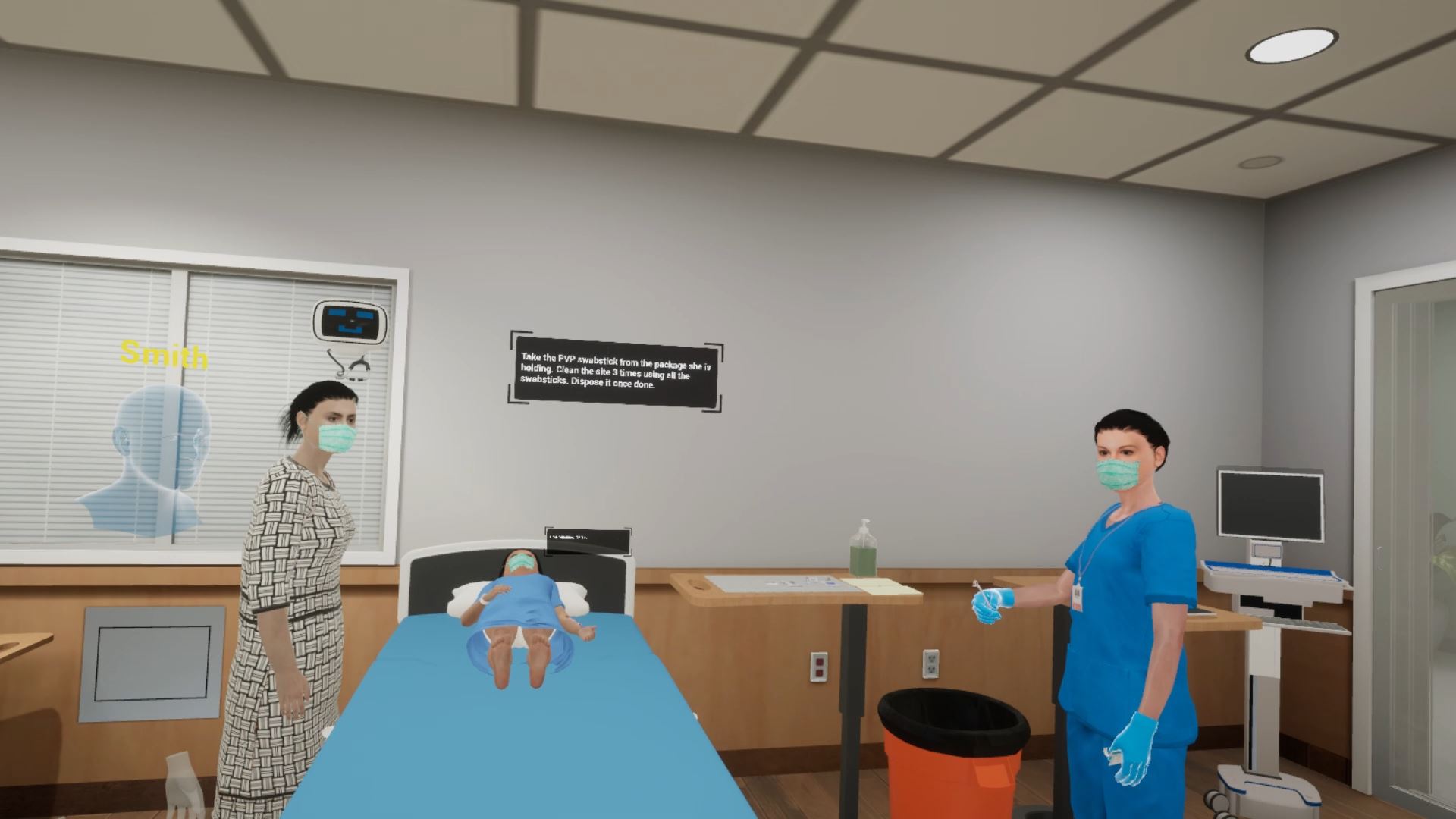
What makes MedVR Education’s VR Training Stand Out
– Guided and Unguided Sessions in Single and Multiplayer Modes: MedVR Education’s VR training program is characterized by its innovative approach and adaptability. Simulations can be performed either independently or as a guided session. It is not necessary for a moderator to be present with the learner. All simulations support a multiplayer session but learners are also given the option to practice in individual sessions. “What I love about MedVR Education is that it’s a dynamic platform,” says Angie Rangel. “It continues to evolve and expand its offerings, making it an ideal fit for our healthcare training needs.”
– Learn on PC/Laptop or VR Headset: Simulations in the MedVR Ed library run on a VR headset but users also have the freedom to join these sessions via a PC or laptop. The MedVR Ed Connect app makes this possible. This app takes care of users who are uncomfortable using a VR headset or are unable to access or use a VR headset for various reasons.
– Scenario Customization: MedVR Education offers in-VR customization of all its scenarios including aspects like selecting patients, patient vitals, environment, equipment, etc. Tanya Nelson appreciates the program’s flexibility: “We have a diverse range of clinical scenarios, and MedVR Education allows us to create custom simulations tailored to our hospital’s specific requirements.”
– Realistic Scenarios with AI-enabled Virtual Patients: Performing in close-to-reality situations helps create familiarity with processes and helps learners connect their learning to real life circumstances. The realistic scenarios from MedVR Education place learners in environments mimicking the real world. Patients and characters in the simulations are AI-enabled which gives them the ability to react and respond like real humans. They represent patients from the real world and provide learners with realistic experiences.
– Cost-Effective and Scalable: Natalie Richards commended the program’s cost-effectiveness: “The return on investment is exceptional. Instead of investing in expensive physical training equipment, we have a cost-effective solution that can be accessed with just an internet connection and a VR headset.”
– Engaging Experience: Reflecting on the importance of an immersive VR experience, Angie Rangel noted, “In an immersive environment, clinical staff are forced to troubleshoot and think critically, which is vital for patient care.”
– Easy Learning Management: The Med VR Ed XR Platform is a one-stop platform that allows moderators and trainers to track learning journeys of all learners. It provides detailed reports of their performances in easy-to-understand formats.
MedVR Education’s CLABSI Prevention VR Training Program has undoubtedly set a new standard in healthcare education, providing a valuable tool to enhance clinical skills and ultimately improve patient outcomes.
Contact us to know more about VR in healthcare training, or visit our MedVR Education webpage to explore the various programs we offer.
